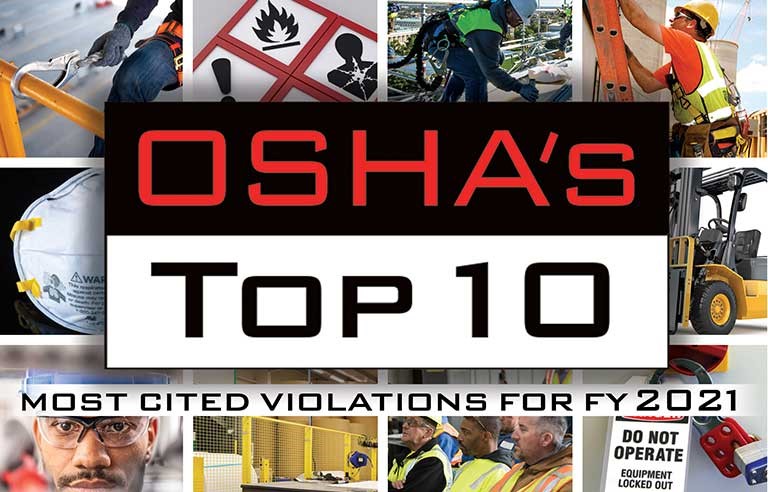For the eleventh straight fiscal year, Fall Protection – General Requirements (1926.501) topped the OSHA Top Ten List for Most Cited Violations FY 2021. In fact, the rest of the top-ten list has the same violations cited for the previous four years, they’ve just swapped positions a little for 2021. Here’s a quick overview of the past five years:

If the list is essentially the same every year, why aren’t more companies targeting these violations to make improvements?
The short answer: they probably are. Other than the few who deliberately choose to take a shortcut or ignore the rules, most failures to comply are unintentional, occasional, or hard to diagnose. You’ll notice the order changes year to year but the reason the list contains the same violations is that companies are focusing on fixing the surface problem without addressing the underlying issue. That’s not to discount the importance of the OSHA violations list, but in many cases, if you look under the hood of each category you’ll find common human factors contributing to all of them.
The OSHA Top Ten list serves as a good reminder that risks are abundant in safety and never-ending. In order to avoid citations and injuries in these pervasive areas, companies need to look more closely at their systems and invest in personal safety skills. A person’s state of mind greatly impacts the outcome of the risks they face.
Take a look at the violations with human factors in mind to see how it all ties together. The number one spot, Fall Protection – General Requirements (1926.501), had 3,706 violations in residential construction activities occurring 6 feet or more above lower levels without fall protection. Notably, twenty-five percent of all fall-related deaths in the workplace can be attributed to falling from 6–10 feet.
At an individual level, the states of mind behind such violations include rushing, complacency, fatigue and frustration. These aren’t willful violations, they’re unintended consequences of being human and not knowing how rushing or complacency alters a person’s risk perception. Often, the task they’re performing will only take a second and so they don’t take the time to use proper fall protection. And once they’ve taken these risks before without any dire consequences, they are increasingly likely to forgo using fall protection in the future. Fatigue can impair your judgment—sleep deprivation has the same effect as drinking too much. Frustration can alter the way a person thinks, causing them to make a rash decision and not realize it until something bad happens.
At an organizational level, human factors are also at play. There are several aspects of the system that can cause people to rush or get frustrated in the first place. The company should provide workers with personal safety skills to increase situational awareness and manage human factors. Supervisors need to be aware of their influence on their group and communicate in a way that builds engagement in safety. The culture needs to support taking time to do things safely, speaking up when they notice something risky or unusual, and continuously reporting near misses and improvement opportunities.
These types of human factors play a role in most incidents, and targeting the violation itself—in this case, a failure to use fall protection—means that companies aren’t focusing on all of the factors that can influence potential violations.
If companies recognize the human factors that are the common causes behind many of these top ten violations, solutions are available to get ahead of it at the worker, leader and organizational levels. There are a number of ways to protect employees from their own states of mind, and techniques like working on habits or self-triggering can go a long way toward managing human factors, protecting lives and saving the company money.
Find out more about human factors to ensure your company avoids being one of the violators on the top ten list for 2022.

